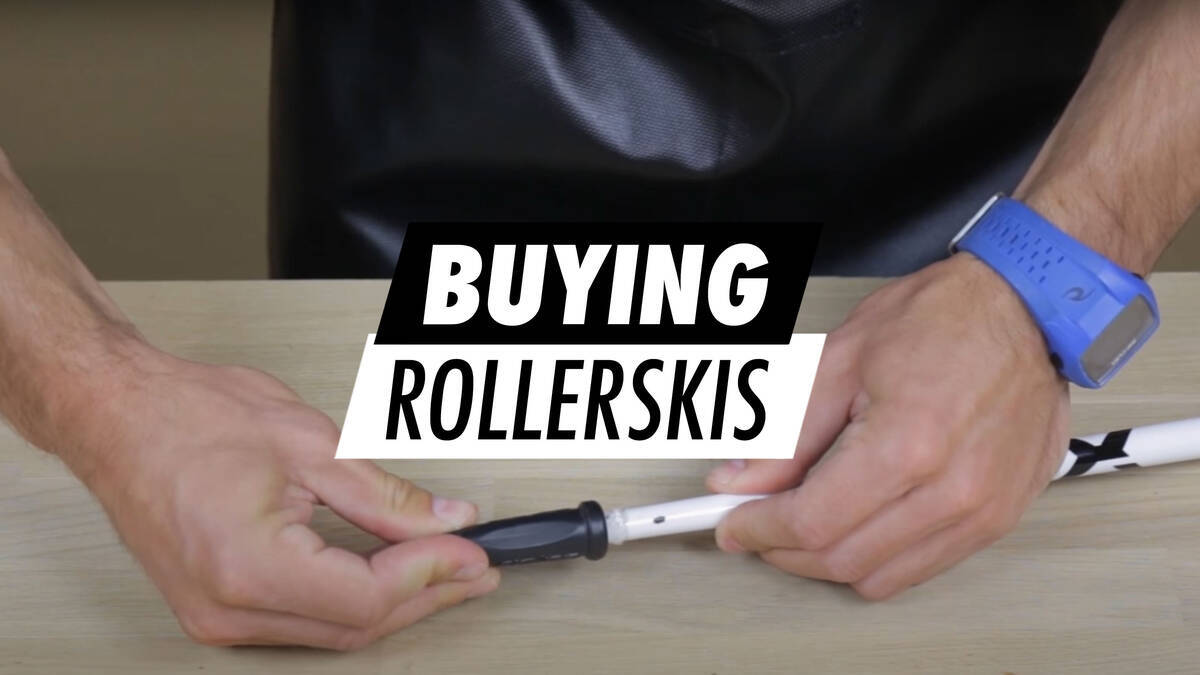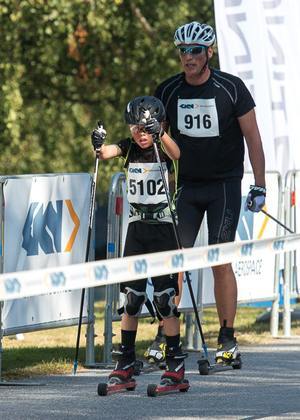Purchasing Roller Skis

Roller skis come in various styles and models, providing numerous options to find the ideal set-up for yourself. This guide is designed to assist you in selecting the appropriate roller ski gear when purchasing new equipment.
Below, discover how to identify the suitable gear for your needs.
Frames: Where and which style do you prefer to ski?
Your skiing style is the first factor to consider—do you enjoy the classic roller skiing format, or lean more towards the skating style? Also, think about the type of surface you favour. These answers are critical in selecting your roller ski frame. For instance, low frames aren't suitable for gravel terrain, while high frames can challenge your balance. If you’re new to roller skiing, attending a practice class is highly recommended, as it will also aid in choosing the correct gear.

Frames are available in materials like aluminum, wood, steel, and carbon, each having its pros and cons. Wood offers better flexibility and ski feel, while aluminum is lightweight and more rigid, enhancing power transfer in competitive settings.
Roller Ski Wheels
Beyond choosing suitable frames, selecting wheels of the correct hardness is crucial. Some roller ski brands supply varying wheel hardness — options may range from one to four levels. If your routes include gravel roads, softer wheels are advisable; for predominantly asphalt paths, harder wheels are suitable. Think about wheel hardness and their material when buying roller skis. The harder the wheels, the more resistance felt on smooth asphalt, while softer wheels provide smoother rolls.
Roller Ski Boots
The array of roller ski boots has never been more extensive than today. Previously, regular winter boots sufficed, but now summer roller ski boots are available. These offer less insulation than winter boots, making them much more comfortable in temperatures above 5-8 degrees Celsius.
Pole and Tip Options for Roller Skiing
The market now includes roller ski poles, and notable advancements have been made, especially concerning weight and material.
Select roller ski poles that match your proficiency, body length, and the type of skis you use. Beginners or intermediate skiers may prefer softer poles, which are more comfortable and help prevent arm soreness. On the other hand, seasoned competitors might opt for stiff poles (80 - 100% carbon) for enhanced power transfer. Bear in mind, stiffer poles are more susceptible to breaking from bumps or impacts. It's prudent to transport your poles in a pole bag and avoid placing them carelessly in a vehicle or on the ground.
Roller ski pole length should suit your height and skiing style, whether classical or skate.
Classic Style
Opt for poles approximately 30 cm (12 in) shorter than your height. Use the ground as a measuring point. Experienced skiers may have a preferred pole length.
Skating Style
For skating, poles should be 15 - 20 cm (6-8 in) shorter than your height. Use the ground as a measuring point. Experienced skiers may have a preferred pole length.
Rollerski Tip Choices
A common misconception is that winter tips can be used for roller skiing. However, compromising here isn't advisable. Invest in quality tips for durability, as cheaper ones wear quickly. Initially, you can manage with a grindstone, but they will eventually need replacing.
Learn how to replace tips here from this video:
Grip and Strap Options
Various grip and strap models are available for roller ski poles. It's essential that they offer easy control. Grips with cork surfaces provide great control, and straps come with closures like Velcro or innovative boa systems.
Grips will wear over time and will require replacement.
See how to change grips in the following video:
In addition, for safety reasons, if your poles are not reflective, consider adding reflectors for increased visibility in traffic. Poles are the most dynamic aspect of roller skiing, capturing attention when used on darker paths or roads. Many options in our pole selection include built-in reflectors—learn more under each product description.
Remember, wearing a helmet is essential, since speeds can reach 30 km/h.
We trust this guide provides insight and answers your questions about roller ski and accessory purchases. If uncertainties remain, or you're unsure about which roller skis to choose, feel free to reach out to us.
